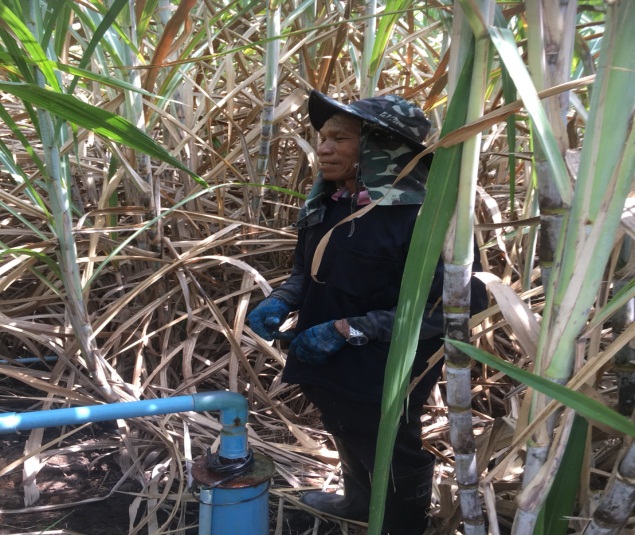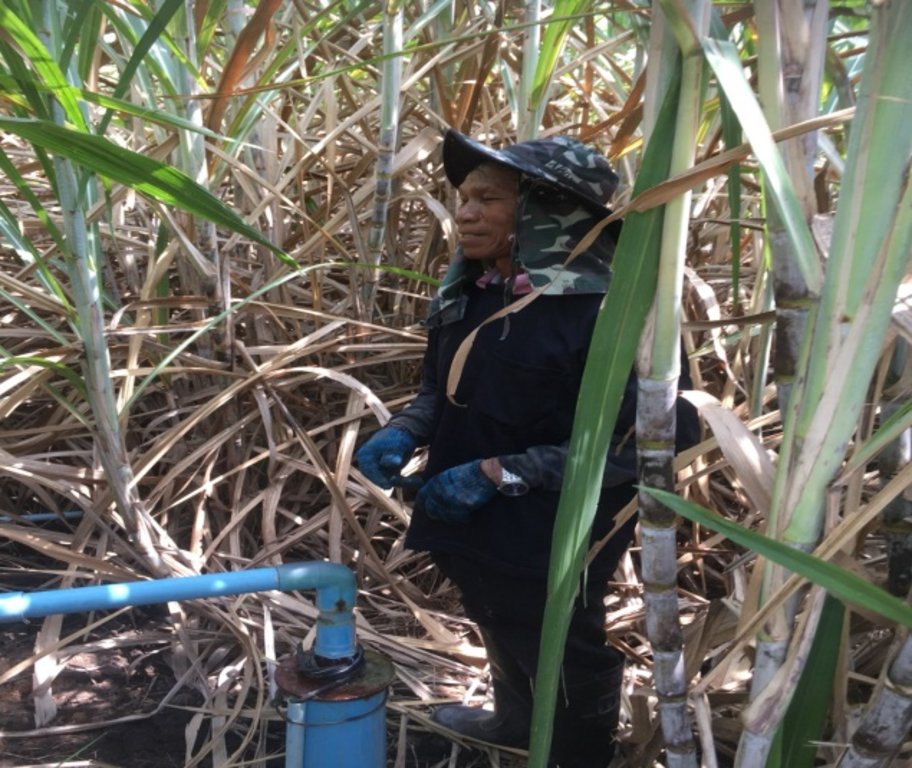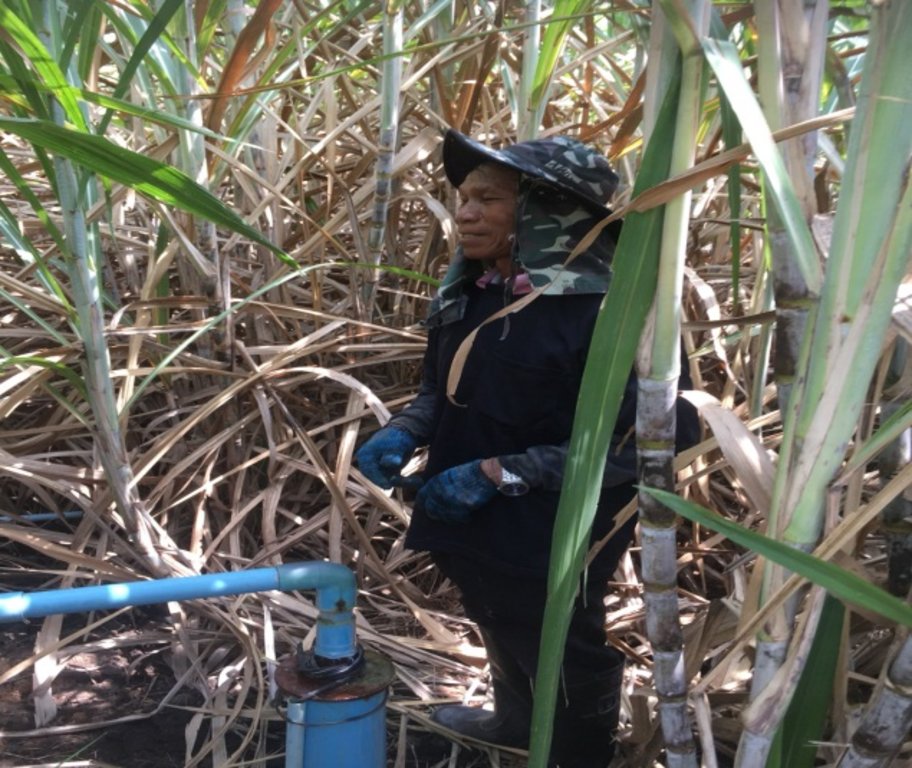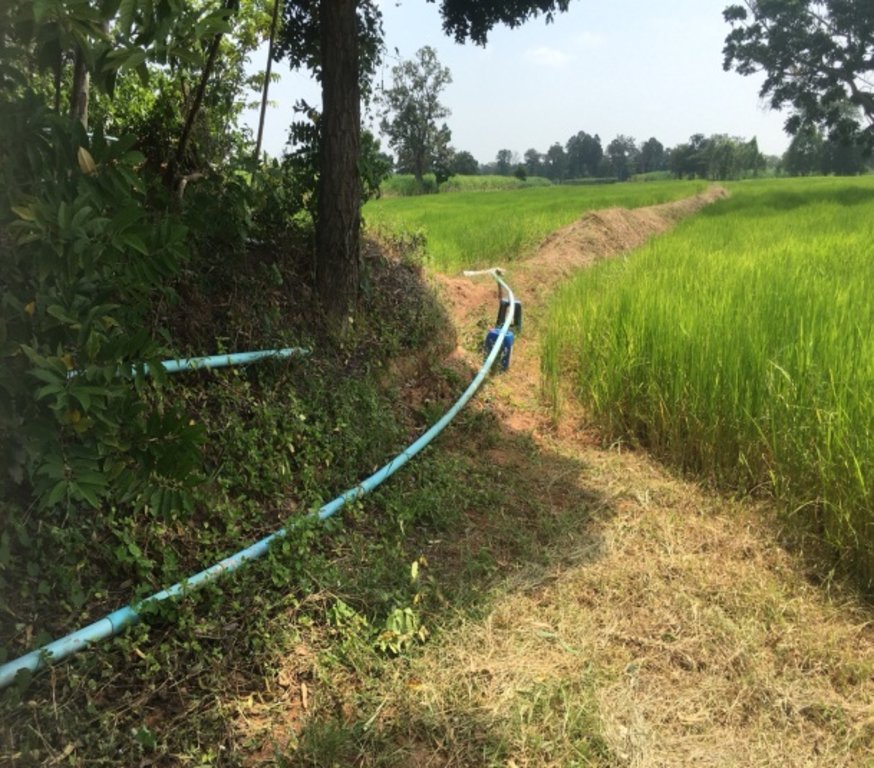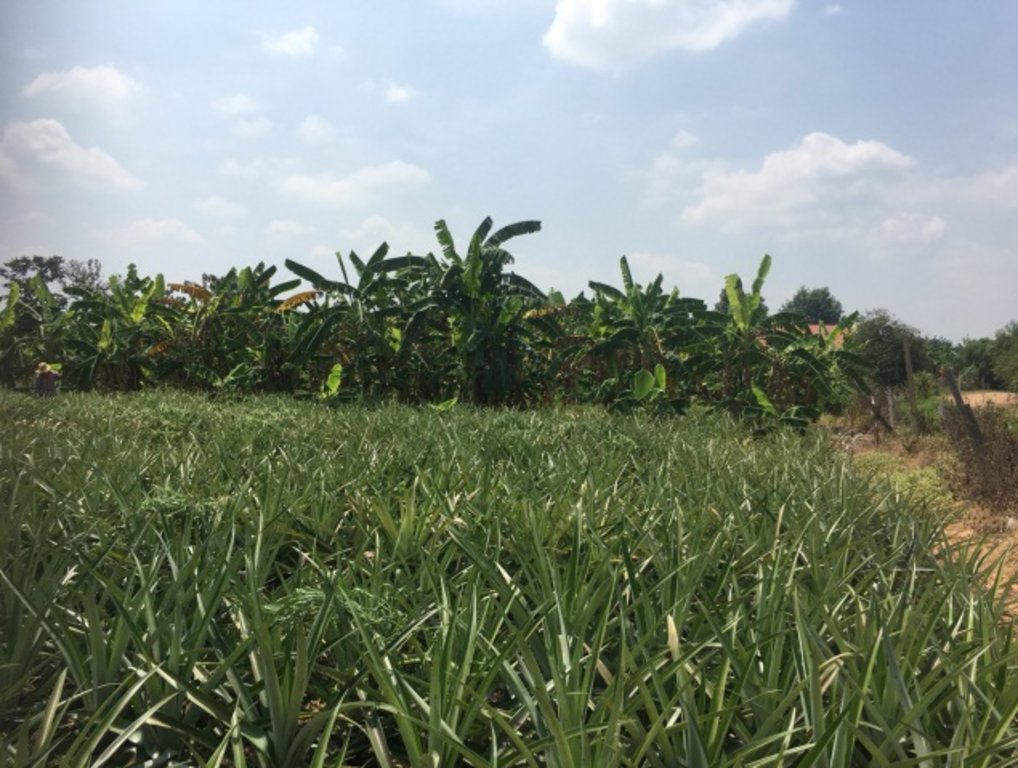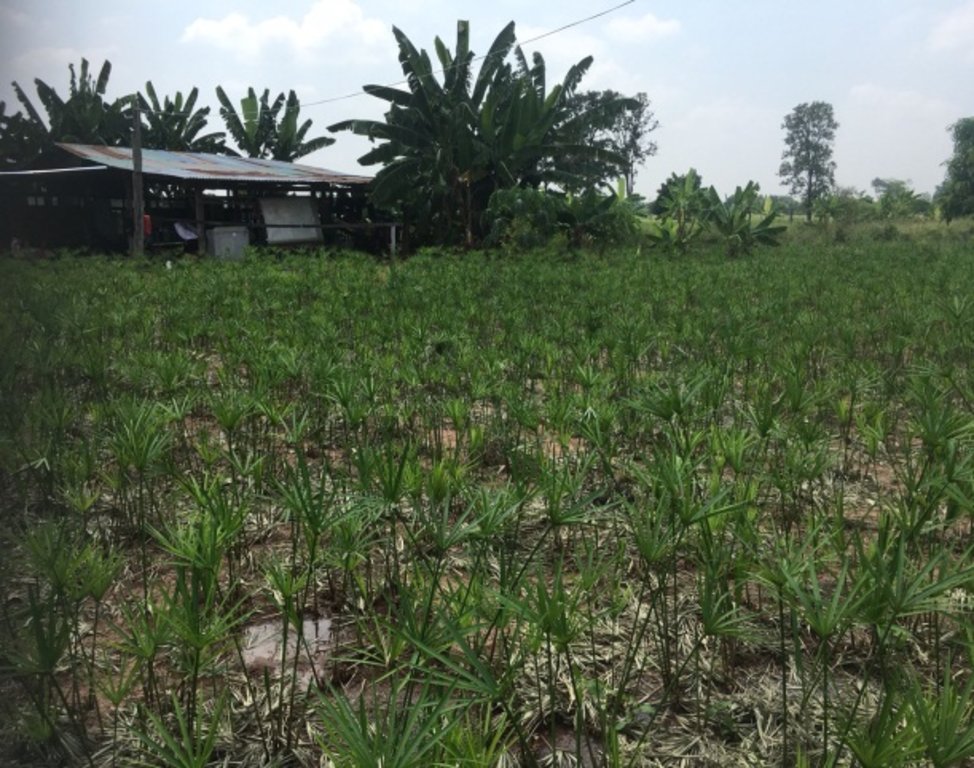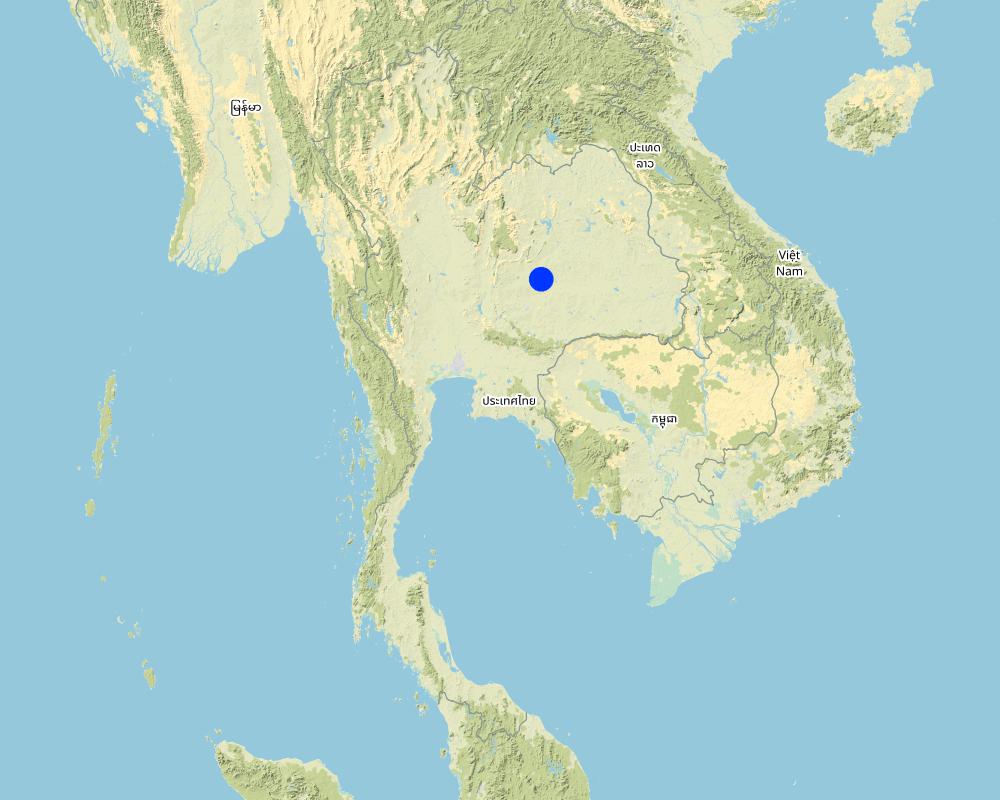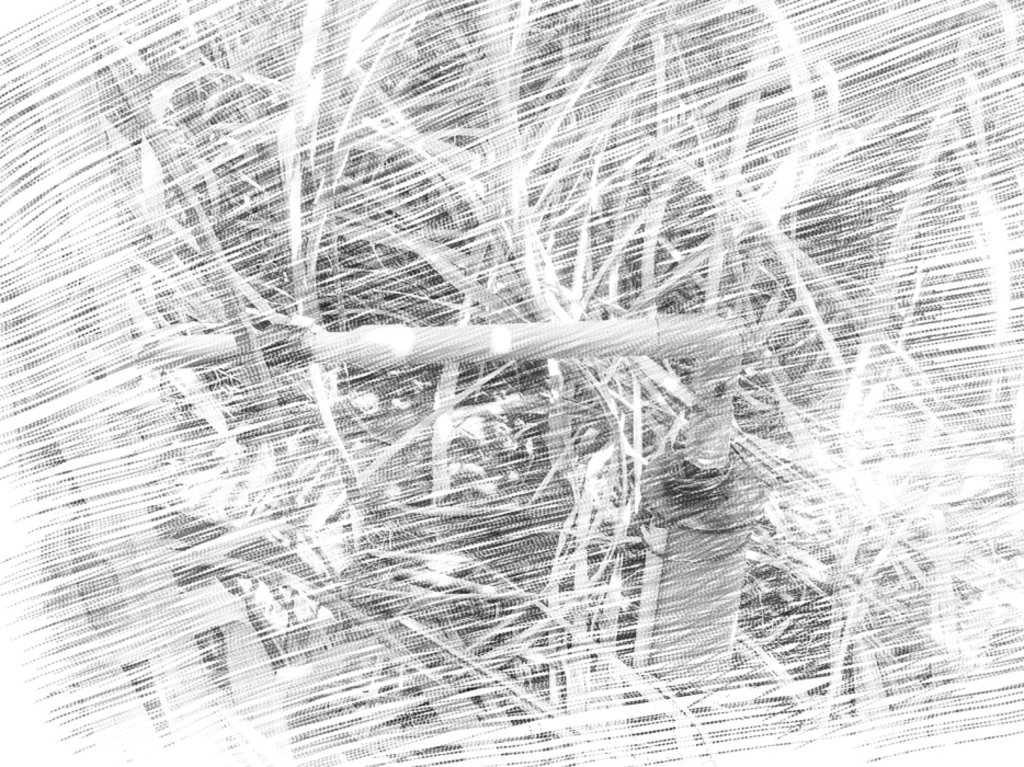Using shallow wells for crops and lowering the saline groundwater table [ไทย]
- ผู้สร้างสรรค์:
- การอัพเดท:
- ผู้รวบรวม: Kaewjai Oechaiyaphum
- ผู้เรียบเรียง: –
- ผู้ตรวจสอบ: William Critchley, Pitayakon Limtong, Rima Mekdaschi Studer, Samran Sombatpanit, Joana Eichenberger
shallow well
technologies_4391 - ไทย
ดูส่วนย่อย
ขยายทั้งหมด ย่อทั้งหมด1. ข้อมูลทั่วไป
1.2 รายละเอียดที่ติดต่อได้ของผู้รวบรวมและองค์กรที่เกี่ยวข้องในการประเมินและการจัดเตรียมทำเอกสารของเทคโนโลยี
วิทยากรหลัก
ผู้ใช้ที่ดิน:
SooPho Boonchu
Land user
ไทย
co-compiler:
ผู้เชี่ยวชาญ SLM:
ผู้เชี่ยวชาญ SLM:
ผู้เชี่ยวชาญ SLM:
ผู้เชี่ยวชาญ SLM:
ผู้เชี่ยวชาญ SLM:
Prawanna Prasit
Technical for Land Development Group , Land Development Regional Office 3 , Land Development Department.
ไทย
National consultant:
ชื่อของโครงการซึ่งอำนวยความสะดวกในการทำเอกสารหรือการประเมินเทคโนโลยี (ถ้าเกี่ยวข้อง)
Decision Support for Mainstreaming and Scaling out Sustainable Land Management (GEF-FAO / DS-SLM)ชื่อของโครงการซึ่งอำนวยความสะดวกในการทำเอกสารหรือการประเมินเทคโนโลยี (ถ้าเกี่ยวข้อง)
Book project: where the land is greener - Case Studies and Analysis of Soil and Water Conservation Initiatives Worldwide (where the land is greener)ชื่อขององค์กรซึ่งอำนวยความสะดวกในการทำเอกสารหรือการประเมินเทคโนโลยี (ถ้าเกี่ยวข้อง)
Land Development Department (Land Development Department) - ไทย1.3 เงื่อนไขการใช้ข้อมูลที่ได้บันทึกผ่านทาง WOCAT
ผู้รวบรวมและวิทยากรหลักยอมรับเงื่อนไขเกี่ยวกับการใช้ข้อมูลที่ถูกบันทึกผ่านทาง WOCAT:
ใช่
1.4 การเปิดเผยเรื่องความยั่งยืนของเทคโนโลยีที่ได้อธิบายไว้
เทคโนโลยีที่ได้อธิบายไว้นี้เป็นปัญหาของความเสื่อมโทรมโทรมของที่ดินหรือไม่ จึงไม่ได้รับการยอมรับว่าเป็นเทคโนโลยีเพื่อการจัดการที่ดินอย่างยั่งยืน:
ไม่ใช่
แสดงความคิดเห็น:
Through this technology, farmers can pump water from shallow wells for agriculture throughout the year: it can lower the groundwater table and reduce salinity. This technology has resulted in reduction salinity in surrounding low land areas. Hence, shallow wells have been accepted by land users.
2. การอธิบายลักษณะของเทคโนโลยี SLM
2.1 การอธิบายแบบสั้น ๆ ของเทคโนโลยี
คำจำกัดความของเทคโนโลยี:
Pumping groundwater from shallow wells for agriculture can control the groundwater table in recharge areas. It helps to manage saline aquifers and reduce soil salinity. Such shallow wells range from 25 to 30 meters deep. This technology is very well-accepted by the land users.
2.2 การอธิบายแบบละเอียดของเทคโนโลยี
คำอธิบาย:
The shallow well is a structure created in the ground by digging or drilling to access water resources. This example of shallow wells is their use in recharge areas to lower groundwater tables. The technology is a subproject of a larger LDD initiative. The technology has been promoted by the Land Development Department at Bua Yai district Nakhon Ratchasima province since 2014. The objectives of the main project are (1) to provide water resources in recharge areas for agriculture: (2) to reduce the amount of saline groundwater and (3) to set up positive economic impact measures.
The process of technology establishment comprises 1) a recharge area survey in salt-affected areas, 2) drilling shallow wells to 25-30 meters depth, 3) installing 5.5 hp gasoline pumps and testing water quality, 4) pumping groundwater and distributing it to the cultivated areas.
Shallow well technology has been implemented on the fields of Mr. Boonchu Supho, Ban Nong Mek, Moo 9, T.Dan Chang, A. Buayai, Nakhon Ratchasima Province. Mr. Boonchu Supho has 21 rai (approx. 3.4 hectares), undulating area with a 2-5% slope, situated at approx. 200 meters above sea level, with a tropical climate, and soil which is classified as being in the series of Kula Ronghai (Ki). This area is upland, and located in the recharge area. Mr. Boonchu Supho has 13 rai (approx. 2 hectares) of lowland rice fields and one shallow well.
In the past, water scarcity was the main issue with his land. Droughts resulted in water scarcity and low productivity. After excavating a shallow well in 2014, groundwater was used for 19 rai of cultivation. Due to soil salinity reduction, rice yields increased to 590 kg/rai (approx. 3700 kg/ha: an increase of approx. 47.4%). Sugar cane yield increased to 30 ton/rai. Moreover, land users can use land more efficiently with mixed plantations of banana, pineapples, sweet bamboo, chilies, galangal and lemongrass to generate income. Even with a drought in 2018, his land had enough water for cultivation, while rice fields in the surrounding area faced water scarcity problem.
In conclusion, the benefits of the shallow well are 1) lowering the groundwater table and reducing salinity, 2) enhancing rice and sugar cane yields, 3) ability to cultivate throughout the year and 4) better soil properties and a better environment. However, the disadvantage of the shallow well is that farmers have to pay for electricity (around 1,200 THB/ 9 months or 10,800 THB/year).
2.3 รูปภาพของเทคโนโลยี
2.4 วีดีโอของเทคโนโลยี
ความคิดเห็น/อธิบายสั้นๆ:
To interview Mr. Boonchu Supho
วันที่:
09/10/2017
สถานที่:
Ban Koksa-ard Moo 9 T.Danchanget, A.Buayai, Nakhon-Ratchasima
ชื่อผู้ถ่ายวีดีโอ:
.Jilayus Sommutram
2.5 ประเทศภูมิภาค หรือสถานที่ตั้งที่เทคโนโลยีได้นำไปใช้และได้รับการครอบคลุมโดยการประเมินนี้
ประเทศ:
ไทย
ภูมิภาค/รัฐ/จังหวัด:
Nakhon Ratchasima
ข้อมูลจำเพาะเพิ่มเติมของสถานที่ตั้ง :
Ban Koksa-ard Moo 10 T.Danchang, A.Buayai
แสดงความคิดเห็น:
Mr. Boonchu Supho has in total 21 rai, divided into 1) Recharge area, which is located in the upland zone. Land utilization comprises 2 rai of residence and shallow well, 1.5 rai of the sugar cane field, 1 rai of a banana field, 1 rai of sweet bamboo, 1 rai of pineapple and 0.5 rai of chillies, galangal, and lemongrass. 2) Discharge area, which is located in a low land area. This area has 13 rai of in-season rice
Map
×2.6 วันที่การดำเนินการ
ระบุปีที่ใช้:
2014
ถ้าไม่รู้ปีที่แน่นอน ให้ระบุวันที่โดยประมาณ:
- น้อยกว่า 10 ปี (ไม่นานนี้)
2.7 คำแนะนำของเทคโนโลยี
ให้ระบุว่าเทคโนโลยีถูกแนะนำเข้ามาอย่างไร:
- ทางโครงการหรือจากภายนอก
ความคิดเห็น (ประเภทของโครงการ เป็นต้น) :
The Land Development Department and local authorities created a demonstration plot to solve the saline soil problem under the LDD project (on preventing soil salinity and to lower the groundwater table in the recharge area) in Bua Yai district. Nakhon Ratchasima Province, since 2014
3. การจัดประเภทของเทคโนโลยี SLM
3.1 วัตถุประสงค์หลักของเทคโนโลยี
- ปรับปรุงการผลิตให้ดีขึ้น
- ลด ป้องกัน ฟื้นฟู การเสื่อมโทรมของที่ดิน
- สร้างผลกระทบทางด้านเศรษฐกิจที่เป็นประโยชน์
- prevents soil salinity and to lower the groundwater table on recharge area
3.2 ประเภทของการใช้ที่ดินในปัจจุบันที่ได้นำเทคโนโลยีไปใช้
Land use mixed within the same land unit:
ไม่ใช่

พื้นที่ปลูกพืช
- การปลูกพืชล้มลุกอายุปีเดียว
- การปลูกพืชยืนต้นที่ไม่มีเนื้อไม้
- vegetable
Annual cropping - Specify crops:
- cereals - rice (wetland)
- vegetables - other
Perennial (non-woody) cropping - Specify crops:
- banana/plantain/abaca
- pineapple
- sugar cane
จำนวนของฤดูเพาะปลูกต่อปี:
- 2
ระบุ:
Land user growing rice 1 time/year, growing sugar cane 2 times/3 years and using of water punping for vegetable growing during rain delay season/ drought situation
Is intercropping practiced?
ไม่ใช่
Is crop rotation practiced?
ไม่ใช่

ทางน้ำ แหล่งน้ำ พื้นที่ชุ่มน้ำ
ผลิตภัณฑ์หลักหรือบริการ:
shallow well
แสดงความคิดเห็น:
An excavating shallow well on recharge area was to lower groundwater table and prevent soil salinity in recharge area. Groundwater was used for rice, sugar cane, banana, pineapple and vegetable growing. This technology has increased productivity up to 47.4% in rice: sugar cane has more than doubled its yields.
3.3 Has land use changed due to the implementation of the Technology?
Has land use changed due to the implementation of the Technology?
- Yes (Please fill out the questions below with regard to the land use before implementation of the Technology)
Land use mixed within the same land unit:
ไม่ใช่

พื้นที่ปลูกพืช
- การปลูกพืชล้มลุกอายุปีเดียว
- การปลูกพืชยืนต้นที่ไม่มีเนื้อไม้
- vegetable
Annual cropping - Specify crops:
- cereals - rice (wetland)
- vegetables - other
Perennial (non-woody) cropping - Specify crops:
- pineapple
- sugar cane
- sweet bamboo
Is intercropping practiced?
ไม่ใช่
Is crop rotation practiced?
ไม่ใช่
แสดงความคิดเห็น:
An excavated shallow well in the recharge area was to lower groundwater table and prevents soil salinity in the recharge area. Groundwater was used for rice, sugar cane, banana, pineapple, and vegetable growing. This technology has increased productivity up to 47.4% in rice: sugar cane has more than doubled its yields.
3.4 การใช้น้ำ
อื่นๆ (เช่น หลังจากน้ำท่วม):
- shallow well
แสดงความคิดเห็น:
Land users know how drought or rain can delay affect productivity. Hence, land users have decided to engage in this project
3.5 กลุ่ม SLM ที่ตรงกับเทคโนโลยีนี้
- ระบบหมุนเวียน (การปลูกพืชหมุนเวียน การพักดิน การเกษตรแบบไร่เลื่อนลอย)
- การจัดการน้ำบาดาล
- desalination
3.6 มาตรการ SLM ที่ประกอบกันเป็นเทคโนโลยี

มาตรการจัดการพืช
- A1: พืช/สิ่งปกคลุมดิน
- A2: อินทรียวัตถุในดิน/ความอุดมสมบูรณ์ในดิน

มาตรการอนุรักษ์ด้วยโครงสร้าง
- S11: อื่น ๆ
แสดงความคิดเห็น:
Groundwater from the shallow well was used for 19 rai of plantation area. The result shows that this technology can increase soil moisture; make a better environment, crop residue from post-harvest can enhance soil organic matter and soil fertility
3.7 รูปแบบหลักของการเสื่อมโทรมของที่ดินที่ได้รับการแก้ไขโดยเทคโนโลยี

การเสื่อมโทรมของดินทางด้านเคมี
- Cs (Salinization/alkalinization): การสะสมเกลือหรือการทำให้เป็นด่าง

การเสื่อมโทรมของดินทางด้านกายภาพ
- Pc (Compaction): การอัดแน่น
- Pk (Slaking and crusting): การอุดตันของช่องว่างในดินหรือรูพรุน

การเสื่อมโทรมของดินทางด้านชีวภาพ
- Bc (Reduction of vegetation cover): การลดลงของจำนวนพืชที่ปกคลุมดิน
- Bq (Quantity/biomass decline): การลดลงของปริมาณหรือมวลชีวภาพ
- Bl (Loss of soil life): การสูญเสียสิ่งมีชีวิตในดิน

การเสื่อมโทรมของน้ำ
- Hq (Decline of groundwater quality): การลดลงของคุณภาพน้ำบาดาล
แสดงความคิดเห็น:
There is not much organic fertilizing in 19 rai of land. Most organic fertilizer has been used in vegetable growing while other plantations are usually chemical fertilizing. Hence, increasing crop production needs more chemical fertilizing.
3.8 การป้องกัน การลดลง หรือการฟื้นฟูความเสื่อมโทรมของที่ดิน
ระบุเป้าหมายของเทคโนโลยีกับความเสื่อมโทรมของที่ดิน:
- ลดความเสื่อมโทรมของดิน
- ปรับตัวกับสภาพความเสื่อมโทรมของที่ดิน
แสดงความคิดเห็น:
The land user has used shallow well technology during drought and rain delay situation since 2014-2018. They found that using shallow wells can reduce groundwater table which might dissolve saline aquifer and spread salinity. Hence, shallow well technology can reduce salinity in lower lying land. With less salt in the topsoil, rice yield has increased to 5-10%
4. ข้อมูลจำเพาะด้านเทคนิค กิจกรรมการนำไปปฏิบัติใช้ ปัจจัยนำเข้า และค่าใช้จ่าย
4.1 แบบแปลนทางเทคนิคของเทคโนโลยี
4.2 ข้อมูลทั่วไปเกี่ยวกับการคำนวณปัจจัยนำเข้าและค่าใช้จ่าย
ให้ระบุว่าค่าใช้จ่ายและปัจจัยนำเข้าได้รับการคำนวณอย่างไร:
- ต่อพื้นที่ที่ใช้เทคโนโลยี
ระบุขนาดและหน่วยพื้นที่:
21 rai own by one selected land user....(e.g. 24 acres, 4.5 hectares)
If using a local area unit, indicate conversion factor to one hectare (e.g. 1 ha = 2.47 acres): 1 ha =:
1 hectare =…6.25 rai
อื่นๆ หรือสกุลเงินประจำชาติ (ระบุ):
THB
ระบุค่าเฉลี่ยของค่าจ้างในการจ้างแรงงานต่อวัน:
300 THB
4.3 กิจกรรมเพื่อการจัดตั้ง
| กิจกรรม | Timing (season) | |
|---|---|---|
| 1. | To drilling shallow well with 25-30 meters depth | January 2014 |
| 2. | Sugar fields | May 2014, 2016, 2018 |
| 3. | Pineapple fields | May 2018 |
| 4. | Banana fields | May 2014 |
| 5. | Reed fields | May 2015 |
| 6. | Sweet bamboo fields | May 2015 |
| 7. | Chillies, galangal and lemon grass fields | May 2014-2018 |
| 8. | Rice fields | June 2014-2018 |
แสดงความคิดเห็น:
No irrigation water therefore planting time depends directly upon the period of the early rainy season, which will be May to July
4.4 ค่าใช้จ่ายของปัจจัยนำเข้าที่จำเป็นสำหรับการจัดตั้ง
| ปัจจัยนำเข้า | หน่วย | ปริมาณ | ค่าใช้จ่ายต่อหน่วย | ค่าใช้จ่ายทั้งหมดต่อปัจจัยนำเข้า | %ของค่าใช้จ่ายที่ก่อให้เกิดขึ้นโดยผู้ใช้ที่ดิน | |
|---|---|---|---|---|---|---|
| แรงงาน | Costs of labor for sugarcane cultivation | puddle | 1.0 | 2500.0 | 2500.0 | |
| แรงงาน | Costs of labor for rice cultivation. | rai | 13.0 | 1150.0 | 14950.0 | |
| แรงงาน | Costs of labor for sugar cane cultivation. | rai | 1.5 | 1200.0 | 1800.0 | |
| แรงงาน | Costs of labor for pineapple cultivation. | rai | 1.0 | 1200.0 | 1200.0 | |
| อุปกรณ์ | Costs of labor for Banana cultivation | rai | 1.0 | 600.0 | 600.0 | |
| อุปกรณ์ | Costs of labor for Papyrus cultivation. | rai | 0.5 | 900.0 | 450.0 | |
| อุปกรณ์ | Costs of labor for Sweet bamboo cultivation. | rai | 1.0 | 600.0 | 600.0 | |
| อุปกรณ์ | Costs of labor for Chilli, galangal, lemon grass cultivation | rai | 1.0 | 900.0 | 900.0 | |
| อุปกรณ์ | Cost of shallow water well drilling equipment | puddle | 1.0 | 100000.0 | 100000.0 | |
| วัสดุด้านพืช | Bud seedling sugarcane | seedling | 2250.0 | 0.9 | 2025.0 | |
| วัสดุด้านพืช | Bud seedling Pineapple | seedling | 2500.0 | 2.0 | 5000.0 | |
| วัสดุด้านพืช | Bud seedling Banana | seedling | 100.0 | 10.0 | 1000.0 | |
| วัสดุด้านพืช | Bud seedling Papyrus | seedling | 3000.0 | 0.2 | 600.0 | |
| ปุ๋ยและสารฆ่า/ยับยั้งการเจริญเติบโตของสิ่งมีชีวิต (ไบโอไซด์) | Bud seedling sweet bamboo | seedling | 25.0 | 80.0 | 2000.0 | |
| ปุ๋ยและสารฆ่า/ยับยั้งการเจริญเติบโตของสิ่งมีชีวิต (ไบโอไซด์) | Bud seedling Chilli, galangal, lemon grass | seedling | 2000.0 | 1.0 | 2000.0 | |
| ปุ๋ยและสารฆ่า/ยับยั้งการเจริญเติบโตของสิ่งมีชีวิต (ไบโอไซด์) | Seedling rice KDML105 | seedling | 65.0 | 25.0 | 1625.0 | |
| ปุ๋ยและสารฆ่า/ยับยั้งการเจริญเติบโตของสิ่งมีชีวิต (ไบโอไซด์) | Chemical fertilizer 15-15-15 | kg | 300.0 | 13.0 | 3900.0 | |
| ปุ๋ยและสารฆ่า/ยับยั้งการเจริญเติบโตของสิ่งมีชีวิต (ไบโอไซด์) | Chicken manure | kg | 2000.0 | 2.0 | 4000.0 | |
| อื่น ๆ | Electricity charge | hr | 240.0 | 5.0 | 1200.0 | |
| อื่น ๆ | Machinery | rai | 19.0 | 500.0 | 9500.0 | |
| ค่าใช้จ่ายทั้งหมดของการจัดตั้งเทคโนโลยี | 155850.0 | |||||
| Total costs for establishment of the Technology in USD | 155850.0 | |||||
ถ้าผู้ใช้ที่ดินรับภาระน้อยกว่า 100% ของค่าใช้จ่าย ให้ระบุว่าใครเป็นผู้รับผิดชอบส่วนที่เหลือ:
The Land Development Department supports expenses for drilling shallow wells approximately 100,000 THB. The land users are involved in the maintenance of shallow wells at the 2nd year about 2,000 THB and pay for cost of maintenance and electricity bills about 1,200 baht per month for 9 months. Moreover, land users have to paid for farm pond construction under farm pond project of LDD about 2,500 THB.
แสดงความคิดเห็น:
Nong Mek Village, Moo 9, Dan Chang Subdistrict, Bua Yai District, Nakhon Ratchasima Province located on the recharge area which has totally 1,000 rai. Recharge area is a type of upland where use for cassava and sugar cane planting. Most land users have not much knowledge and motivation on shallow well drilling. Hence, Land Development Department comes to train, solution on salt-affected soil with the project on prevents soil salinity, and to lower the groundwater table on recharge area since 2014. The shallow well technology has been implemented through the demonstration plot, which is the first learning center of salt-affected soil management on the recharge area
4.5 การบำรุงรักษาสภาพหรือกิจกรรมที่เกิดขึ้นเป็นประจำ
| กิจกรรม | ช่วงระยะเวลา/ความถี่ | |
|---|---|---|
| 1. | Maintenance | 1 Times/year |
| 2. | Electricity charge | 1 Times/month |
แสดงความคิดเห็น:
Shallow well which supported by LDD is a type of 5.5 hp gasoline pump then, land users try to use the electric water pump instead. The use of electrical water pump can increases yield productivity and enhance land users’ income. This is resulting in a better life.
4.6 ค่าใช้จ่ายของปัจจัยนำเข้าและกิจกรรมที่เกิดขึ้นเป็นประจำที่ต้องการการบำรุงรักษา (ต่อปี)
| ปัจจัยนำเข้า | หน่วย | ปริมาณ | ค่าใช้จ่ายต่อหน่วย | ค่าใช้จ่ายทั้งหมดต่อปัจจัยนำเข้า | %ของค่าใช้จ่ายที่ก่อให้เกิดขึ้นโดยผู้ใช้ที่ดิน | |
|---|---|---|---|---|---|---|
| อุปกรณ์ | electricity charge,5 baht per unit 8 hours per day, 360 days / year | time | 2880.0 | 5.0 | 14400.0 | |
| อุปกรณ์ | Machinery | time | 1.0 | 2000.0 | 2000.0 | |
| ค่าใช้จ่ายทั้งหมดของการบำรุงรักษาสภาพเทคโนโลยี | 16400.0 | |||||
| Total costs for maintenance of the Technology in USD | 16400.0 | |||||
แสดงความคิดเห็น:
Land users do maintenance this technology by themselves, without hiring labor. There has only cost of modifying.
4.7 ปัจจัยสำคัญที่สุดที่มีผลกระทบต่อค่าใช้จ่าย
ปัจจัยสำคัญที่สุดที่มีผลกระทบต่อค่าใช้จ่ายต่างๆ:
Cost of shallow wells implementation at the 1st year consists of 100,000 THB of labor hiring, equipment, and installation. Besides, land users have to pay 2,500 THB for farm pond construction
The expenditure at the 1st year in 2014, pumping groundwater needs to use electricity 8 hours/ 270 day. The amount of water pumping has distributed to 13 rai of rice fields, 1.5 rai of sugar cane fields, 1 rai of chilies, galangal and lemongrass fields. The expenditure at the 1st year with 19 rai is 42,050 THB combine with electricity charge 10,800 THB. Thus, the grand total of expenditure is 52,850 THB.
The income from crop production at 1st year, land users sold rice yield and got 109,200 THB (the average amount of yield is 560 kg/rai, totally gain yield is 7,280 kg, price of rice yield is 15 THB/kg). Land users got 40,500 THB from sugar cane production (the average amount of yield is 30 ton/rai, totally gain yield is 45 ton, price of sugar cane yield is 900 THB/ton). Moreover, land users also got 2,000 THB/month or 24,000 THB/year from chilies, galangal, and lemongrass production. Thus, the grand total of income is 173,700 THB and net income is 120,850 THB
Cost and income at 2nd year in 2015 are described as following;
The expenditure at 2nd year in 2015, pumping groundwater needs to use electricity 8 hours/ 270 day. The amount of water pumping has distributed to 13 rai of rice fields, 1.5 rai of sugar cane fields, 1 rai of sweet bamboo, 1 rai of chilies, galangal and lemongrass fields and 0.5 rai of reed fields. The expenditure at the 2nd year is 40,475 THB combine with electricity charge 10,800 THB and 2,000 THB of water pump modifying fee Thus, the grand total of expenditure is 51,275 THB.
The income from crop production at the 2nd year, land users sold rice yield and got 109,200 THB (the average amount of yield is 560 kg/rai, totally gain yield is 7,280 kg, price of rice yield is 15 THB/kg). Land users got 40,500 THB from sugar cane production (the average amount of yield is 30 ton/rai, totally gain yield is 45 ton, price of sugar cane yield is 900 THB/ton). Moreover, land users also got 3,500 THB/month or 42,000 THB/year from reed, sweet bamboo, chilies, galanga, and lemongrass production. Thus, the grand total of income is 191,700 THB and net income is 140,425 THB
The expenditure at the 3rd year in 2016, pumping groundwater needs to use electricity 8 hours/ 270 day. The amount of water pumping has distributed to 13 rai of rice fields, 1.5 rai of sugar cane fields, 1 rai of sweet bamboo, 1 rai of chilies, galangal and lemongrass fields and 1 rai of reed fields and 0.5 rai of reed. The expenditure at the 3rd year is 40,800 THB combine with electricity charge 10,800 THB and 2,000 THB of water pump modifying fee Thus, the grand total of expenditure is 51,600 THB.
The income from crop production at 3rd year, land users sold rice yield and got 109,200 THB (the average amount of yield is 560 kg/rai, totally gain yield is 7,280 kg, price of rice yield is 15 THB/kg). Land users got 40,500 THB from sugar cane production (the average amount of yield is 30 ton/rai, totally gain yield is 45 ton, price of sugar cane yield is 900 THB/ton). Moreover, land users also got 3,500 THB/month or 42,000 THB/year from reed, sweet bamboo, chilies, galangal, and lemongrass production. Thus, the grand total of income is 191,700 THB and net income is 140,100 THB
The expenditure at the 4th year in 2017, pumping groundwater needs to use electricity 8 hours/ 270 day. The amount of water pumping has distributed to 13 rai of rice fields, 1.5 rai of sugar cane fields, 1 rai of sweet bamboo, 1 rai of chilies, galangal and lemongrass fields and 1 rai of reed fields and 0.5 rai of reed. The expenditure at the 4th year is 37,125 THB combine with electricity charge 10,800 THB and 2,000 THB of water pump modifying fee Thus, the grand total of expenditure is 47,925 THB.
The income from crop production at 4th year, land users sold rice yield and got 109,200 THB (the average amount of yield is 560 kg/rai, totally gain yield is 7,280 kg, price of rice yield is 15 THB/kg). Land users got 40,500 THB from sugar cane production (the average amount of yield is 30 ton/rai, totally gain yield is 45 ton, price of sugar cane yield is 900 THB/ton). Moreover, land users also got 3,500 THB/month or 42,000 THB/year from reed, sweet bamboo, chilies, galangal, and lemongrass production. Thus, the grand total of income is 191,700 THB and net income is 143,775 THB
The expenditure at the 5th year in 2018, pumping groundwater needs to use electricity 8 hours/ 270 day. The amount of water pumping has distributed to 13 rai of rice fields, 1.5 rai of sugar cane fields, 1 rai of sweet bamboo, 1 rai of banana, 1 rai of chilies, galangal and lemongrass fields,1 rai of reed
5. สิ่งแวดล้อมทางธรรมชาติและของมนุษย์
5.1 ภูมิอากาศ
ฝนประจำปี
- < 250 ม.ม.
- 251-500 ม.ม.
- 501-750 ม.ม.
- 751-1,000 ม.ม.
- 1,001-1,500 ม.ม.
- 1,501-2,000 ม.ม.
- 2,001-3,000 ม.ม.
- 3,001-4,000 ม.ม.
- > 4,000 ม.ม.
ระบุปริมาณน้ำฝนเฉลี่ยรายปี (ถ้ารู้) :หน่วย ม.ม.
1084.00
ข้อมูลจำเพาะ/ความคิดเห็นเรื่องปริมาณน้ำฝน:
Average annual rainfall from 2008-2013
ระบุชื่อของสถานีตรวดวัดอากาศที่ใช้อ้างอิงคือ:
Meteorological Department
เขตภูมิอากาศเกษตร
- กึ่งแห้งแล้ง
Temperatures average 13-39 degrees Celsius, average relative humidity 55-89.%
5.2 สภาพภูมิประเทศ
ค่าเฉลี่ยความลาดชัน:
- ราบเรียบ (0-2%)
- ลาดที่ไม่ชัน (3-5%)
- ปานกลาง (6-10%)
- เป็นลูกคลื่น (11-15%)
- เป็นเนิน (16-30%)
- ชัน (31-60%)
- ชันมาก (>60%)
ธรณีสัณฐาน:
- ที่ราบสูง/ที่ราบ
- สันเขา
- ไหล่เขา
- ไหล่เนินเขา
- ตีนเนิน
- หุบเขา
ระดับความสูง:
- 0-100 เมตร
- 101-500 เมตร
- 501-1,000 เมตร
- 1,001-1,500 เมตร
- 1,501-2,000 เมตร
- 2,001-2,500 เมตร
- 2,501-3,000 เมตร
- 3,001-4,000 เมตร
- > 4,000 เมตร
ให้ระบุถ้าเทคโนโลยีได้ถูกนำไปใช้:
- ไม่เกี่ยวข้อง
ความคิดเห็นและข้อมูลจำเพาะเพิ่มเติมเรื่องสภาพภูมิประเทศ:
Geography The Bua Yai district is located in the north of Nakhon Ratchasima. On the Korat Plateau
5.3 ดิน
ค่าเฉลี่ยความลึกของดิน:
- ตื้นมาก (0-20 ซ.ม.)
- ตื้น (21-50 ซ.ม.)
- ลึกปานกลาง (51-80 ซ.ม.)
- ลึก (81-120 ซ.ม.)
- ลึกมาก (>120 ซ.ม.)
เนื้อดิน (ดินชั้นบน):
- ปานกลาง (ดินร่วน ทรายแป้ง)
เนื้อดินล่าง (> 20 ซ.ม.ต่ำจากผิวดิน):
- ปานกลาง (ดินร่วน ทรายแป้ง)
อินทรียวัตถุในดิน:
- ต่ำ (<1%)
(ถ้ามี) ให้แนบคำอธิบายเรื่องดินแบบเต็มหรือระบุข้อมูลที่มีอยู่ เช่น ชนิดของดิน ค่า pH ของดินหรือความเป็นกรดของดิน ความสามารถในการแลกเปลี่ยนประจุบวก ไนโตรเจน ความเค็ม เป็นต้น:
The surface soil is sandy loam. The bottom soil is sandy loam soil. The pH is between 7.5 - 8.5. Salinity is at a salty level. Have salt stains on the surface throughout the year and have very low P and K.
5.4 ความเป็นประโยชน์และคุณภาพของน้ำ
ระดับน้ำใต้ดิน:
<5 เมตร
น้ำไหลบ่าที่ผิวดิน:
ปานกลาง
คุณภาพน้ำ (ที่ยังไม่ได้บำบัด):
เป็นน้ำใช้เพื่อการเกษตรเท่านั้น (การชลประทาน)
Water quality refers to:
ground water
ความเค็มของน้ำเป็นปัญหาหรือไม่:
ใช่
ระบุ:
Slightly saline
กำลังเกิดน้ำท่วมในพื้นที่หรือไม่:
ไม่ใช่
ความคิดเห็นและข้อมูลจำเพาะเพิ่มเติมเรื่องคุณภาพและปริมาณน้ำ:
saline groundwater
5.5 ความหลากหลายทางชีวภาพ
ความหลากหลายทางชนิดพันธุ์:
- ปานกลาง
ความหลากหลายของแหล่งที่อยู่:
- ปานกลาง
ความคิดเห็นและข้อมูลจำเพาะเพิ่มเติมของความหลากหลายทางชีวภาพ:
Before drilling shallow wells there were very few animals living in this area. After 1 year of shallow well being implemented, there is an increase in food and plant sources, the habitat of living things. To implement the technology resulting in more organisms such as fish, birds, rats, earthworms, and insects
5.6 ลักษณะของผู้ใช้ที่ดินที่นำเทคโนโลยีไปปฏิบัติใช้
อยู่กับที่หรือเร่ร่อน:
- อยู่กับที่
แนวทางการตลาดของระบบการผลิต:
- mixed (subsistence/ commercial)
รายได้ที่มาจากนอกฟาร์ม:
- 10-50% ของรายได้ทั้งหมด
ระดับของความมั่งคั่งโดยเปรียบเทียบ:
- รวย
เป็นรายบุคคล/ครัวเรือน:
- เป็นรายบุคคล/ครัวเรือน
ระดับของการใช้เครื่องจักรกล:
- งานที่ใช้แรงกาย
- การใช้เครื่องจักรหรือเครื่องยนต์
เพศ:
- ชาย
อายุของผู้ใช้ที่ดิน:
- ผู้สูงอายุ
ระบุลักษณะอื่นๆที่เกี่ยวข้องของผู้ใช้ที่ดิน:
Land users are diligent in their work and patient. They carried out crop rotation throughout the year. The, they get more revenue daily, monthly and yearly.
5.7 Average area of land used by land users applying the Technology
- < 0.5 เฮกตาร์
- 0.5-1 เฮกตาร์
- 1-2 เฮกตาร์
- 2-5 เฮกตาร์
- 5-15 เฮกตาร์
- 15-50 เฮกตาร์
- 50-100 เฮกตาร์
- 100-500 เฮกตาร์
- 500-1,000 เฮกตาร์
- 1,000-10,000 เฮกตาร์
- >10,000 เฮกตาร์
พิจารณาว่าเป็นขนาดเล็ก กลาง หรือขนาดใหญ่ (ซึ่งอ้างอิงถึงบริบทระดับท้องถิ่น):
- ขนาดกลาง
แสดงความคิดเห็น:
Land users drill a shallow well on the recharge area in order to pump groundwater for planting throughout the year to reduce expenses and increase family income
5.8 กรรมสิทธิ์ในที่ดิน สิทธิในการใช้ที่ดินและสิทธิในการใช้น้ำ
กรรมสิทธิ์ในที่ดิน:
- รายบุคคล ได้รับสิทธิครอบครอง
สิทธิในการใช้ที่ดิน:
- รายบุคคล
- Rainfed.
Are land use rights based on a traditional legal system?
ใช่
แสดงความคิดเห็น:
Land users can decide to use the land by themselves. They did crop rotation by using water pumped from shallow wells. The Land users could be an example for the other that could be shown by surrounding farmer want to engage in this project.
5.9 การเข้าถึงบริการและโครงสร้างพื้นฐาน
สุขภาพ:
- จน
- ปานกลาง
- ดี
การศึกษา:
- จน
- ปานกลาง
- ดี
ความช่วยเหลือทางด้านเทคนิค:
- จน
- ปานกลาง
- ดี
การจ้างงาน (เช่น ภายนอกฟาร์ม):
- จน
- ปานกลาง
- ดี
ตลาด:
- จน
- ปานกลาง
- ดี
พลังงาน:
- จน
- ปานกลาง
- ดี
ถนนและการขนส่ง:
- จน
- ปานกลาง
- ดี
น้ำดื่มและการสุขาภิบาล:
- จน
- ปานกลาง
- ดี
บริการด้านการเงิน:
- จน
- ปานกลาง
- ดี
6. ผลกระทบและสรุปคำบอกกล่าว
6.1 ผลกระทบในพื้นที่ดำเนินการ (On-site) จากการใช้เทคโนโลยี
ผลกระทบทางด้านเศรษฐกิจและสังคม
การผลิต
การผลิตพืชผล
คุณภาพพืชผล
การเสี่ยงต่อความล้มเหลวในการผลิต
ความหลากหลายของผลิตภัณฑ์
พื้นที่สำหรับการผลิต
ความเป็นประโยชน์และคุณภาพของน้ำ
การมีน้ำดื่มไว้ให้ใช้
คุณภาพน้ำดื่ม
การมีน้ำไว้ให้ปศุสัตว์
รายได้และค่าใช้จ่าย
ค่าใช่จ่ายของปัจจัยการผลิตทางการเกษตร
รายได้จากฟาร์ม
ภาระงาน
ผลกระทบด้านสังคมวัฒนธรรมอื่น ๆ
ความมั่นคงด้านอาหาร / พึ่งตนเองได้
สถานการณ์ด้านสุขภาพ
การใช้ที่ดิน / สิทธิในการใช้น้ำ
โอกาสทางวัฒนธรรม
โอกาสทางด้านสันทนาการ
สถาบันของชุมชน
สถาบันแห่งชาติ
SLM หรือความรู้เรื่องความเสื่อมโทรมของที่ดิน
การบรรเทาความขัดแย้ง
สถานการณ์ของกลุ่มด้อยโอกาส ทางด้านสังคมและเศรษฐกิจ
ผลกระทบด้านนิเวศวิทยา
วัฐจักรน้ำหรือน้ำบ่า
ปริมาณน้ำ
คุณภาพน้ำ
การเก็บเกี่ยวหรือการกักเก็บน้ำ
น้ำไหลบ่าที่ผิวดิน
การระบายน้ำส่วนเกิน
น้ำบาดาลหรือระดับน้ำในแอ่งน้ำบาดาล
การระเหย
ดิน
ความชื้นในดิน
สิ่งปกคลุมดิน
การสูญเสียดิน
การสะสมของดิน
การเกิดแผ่นแข็งที่ผิวดิน /การเกิดชั้นดาน
การอัดแน่นของดิน
การหมุนเวียนและการเติมของธาตุอาหาร
ความเค็ม
อินทรียวัตถุในดิน/ต่ำกว่าดินชั้น C
ความเป็นกรด
ความหลากหลายทางชีวภาพของพืชและสัตว์
การปกคลุมด้วยพืช
มวลชีวภาพ/เหนือดินชั้น C
ความหลากหลายทางชีวภาพของพืช
พืชพันธุ์ต่างถิ่นที่รุกล้ำเข้ามา
ความหลากหลายทางชีวภาพของสัตว์
ชนิดพันธุ์ที่ให้ประโยชน์
ความหลากหลายของสัตว์
การจัดการศัตรูพืชและโรคพืช
ลดความเสี่ยงของภัยพิบัติ
ผลกระทบจากน้ำท่วม
ดินถล่ม/ ซากต่าง ๆ ที่ถูกพัดพามา
ผลกระทบจากภัยแล้ง
ผลกระทบของพายุไซโคลน พายุฝน
การปล่อยคาร์บอนและก๊าซเรือนกระจก
ความเสี่ยงจากไฟ
ความเร็วของลม
ภูมิอากาศจุลภาค
6.2 ผลกระทบนอกพื้นที่ดำเนินการ (Off-site) จากการใช้เทคโนโลยี
น้ำที่ใช้ประโยชน์ได้
การไหลของน้ำคงที่และสม่ำเสมอในช่วงฤดูแล้ง
น้ำท่วมพื้นที่ท้ายน้ำ
การทับถมของดินตะกอนพื้นที่ท้ายน้ำ
การเกิดมลพิษในน้ำบาดาลหรือแม่น้ำ
ความสามารถต้านทานการเปลี่ยนแปลง / ความสามารถในการคัดกรอง
ตะกอนที่ถูกพัดพามาโดยลม
ความเสียหายต่อพื้นที่เพาะปลูกของเพื่อนบ้าน
ความเสียหายต่อโครงสร้างพื้นฐานของรัฐหรือของเอกชน
ผลกระทบของก๊าซเรือนกระจก
6.3 การเผชิญและความตอบสนองของเทคโนโลยีต่อการเปลี่ยนแปลงสภาพภูมิอากาศที่ค่อยเป็นค่อยไป และสภาพรุนแรงของภูมิอากาศ / ภัยพิบัติ (ที่รับรู้ได้โดยผู้ใช้ที่ดิน)
แสดงความคิดเห็น:
An opinion of the land user, there are many situations such as rain delay during 2014-2016, drought during December – April 201 and flood in rainy season while rain delay in 2018 can lead to water scarcity problem. However, that situation cannot impact farmland with shallow wells.
6.4 การวิเคราะห์ค่าใช้จ่ายและผลประโยชน์ที่ได้รับ
ผลประโยชน์ที่ได้รับเปรียบเทียบกับค่าใช้จ่ายในการจัดตั้งเป็นอย่างไร (จากมุมมองของผู้ใช้ที่ดิน)
ผลตอบแทนระยะสั้น:
ด้านบวก
ผลตอบแทนระยะยาว:
ด้านบวกอย่างมาก
ผลประโยชน์ที่ได้รับเปรียบเทียบกับค่าใช้จ่ายในการบำรุงรักษาหรือต้นทุนที่เกิดขึ้นซ้ำอีก เป็นอย่างไร (จากมุมมองของผู้ใช้ที่ดิน)
ผลตอบแทนระยะสั้น:
ด้านบวก
ผลตอบแทนระยะยาว:
ด้านบวกอย่างมาก
แสดงความคิดเห็น:
Land users to pay a 2,000 baht machinery as a long-term investment to operate for several years and pay the electric fee for water pumping but land users can have 10,800 THB and the revenue daily, monthly and annually and reduce costs in the household
6.5 การปรับตัวของเทคโนโลยี
- 1-10%
Of all those who have adopted the Technology, how many did so spontaneously, i.e. without receiving any material incentives/ payments?
- 0-10%
แสดงความคิดเห็น:
Land user and other farmer have knowledge and understanding on an advantage of shallow well technology implemented. Some of them drill water well by themselves.
6.6 การปรับตัว
เทคโนโลยีได้รับการปรับเปลี่ยนเมื่อเร็วๆนี้ เพื่อให้ปรับตัวเข้ากับสภาพที่กำลังเปลี่ยนแปลงหรือไม่:
ใช่
อื่น ๆ (ระบุ):
changing practice
ให้ระบุการปรับตัวของเทคโนโลยี (การออกแบบ วัสดุหรือชนิดพันธุ์ เป็นต้น):
Land users have modified water pump machine by use electric pump instead of a gasoline pump
6.7 จุดแข็ง / ข้อได้เปรียบ / โอกาสของเทคโนโลยี
| จุดแข็ง / ข้อได้เปรียบ / โอกาสในทัศนคติของผู้ใช้ที่ดิน |
|---|
| Reduce soil salinity |
| Save money by bringing rice and vegetables grown into household food. |
| Increase sales revenue, rice, sugarcane, pineapple, Papyrus, banana, lemongrass, galangal, chili, and sweet bamboo. |
| Save money by bringing rice and vegetables grown into household food. |
| จุดแข็ง / ข้อได้เปรียบ / โอกาสในทัศนคติของผู้รวบรวมหรือวิทยากรหลัก |
|---|
| Pumping water from shallow wells for agricultural use, can reduce groundwater table and prevent salinity that is a great measure on land degradation mitigation |
| The land user can have food from plant production from their farms. The land user can reduce household expenses. Left to sell, resulting in a daily, monthly and annual income and make a better life. |
| Biodiversity enhancement, there are many plants and living things such as earthworms, birds, fish, frogs, and insects. This is resulting in a balanced ecosystem. |
6.8 จุดอ่อน / ข้อเสียเปรียบ / ความเสี่ยงของเทคโนโลยีและวิธีการแก้ไข
| จุดอ่อน / ข้อเสียเปรียบ / ความเสี่ยงในทัศนคติของผู้ใช้ที่ดิน | มีวิธีการแก้ไขได้อย่างไร |
|---|---|
| After one year of shallow wells implemented, land users must take care and maintain shallow wells as usual. | Make an agreement on taking care of shallow wells after implemented. |
| To inform LDD when something is wrong |
| จุดอ่อน / ข้อเสียเปรียบ / ความเสี่ยงในทัศนคติของผู้รวบรวมหรือวิทยากรหลัก | มีวิธีการแก้ไขได้อย่างไร |
|---|---|
| Other land users who are not participating. will not get knowledge about the use of shallow well to reduce the level of underground water. | LDD staff / Land users participating in the project to advise or educate other farmers on how to join the project. |
7. การอ้างอิงและการเชื่อมต่อ
7.1 วิธีการและแหล่งข้อมูล
- ไปเยี่ยมชมภาคสนาม การสำรวจพื้นที่ภาคสนาม
Visit 1 farmer/user's land
- การสัมภาษณ์กับผู้ใช้ที่ดิน
Interview with 1 farmer.
- การสัมภาษณ์ผู้เชี่ยวชาญด้าน SLM หรือผู้ชำนาญ
The Land Development Department officers and planners (7)
วันที่เก็บรวบรวมข้อมูล(ภาคสนาม) :
03/09/2018
แสดงความคิดเห็น:
To be clear on the result of the technology implementation there should be soil sampling as well.
7.2 การอ้างอิงถึงสิ่งตีพิมพ์
หัวข้อ, ผู้เขียน, ปี, หมายเลข ISBN:
Evaluate the project using water from shallow wells to prevent. Distribution of saline soil as farmers participate in Bua Yai District,Nakhon Ratchasima Province (Kamolthip Sasithorn: 2017
ชื่อเรื่อง ผู้เขียน ปี ISBN:
http://www.ldd.go.th
หัวข้อ, ผู้เขียน, ปี, หมายเลข ISBN:
Study of groundwater level changes to rice production in an integrated saline soil development project area, Bua Yai District, Nakhon Ratchasima Province (Bowon Buakhao: 2017)
ชื่อเรื่อง ผู้เขียน ปี ISBN:
http://www.ldd.go.th
7.3 Links to relevant online information
ชื่อเรื่องหรือคำอธิบาย:
where the land is greener - Case Studies and Analysis of Soil and Water Conservation Initiatives Worldwide
URL:
https://www.wocat.net/library/media/27/
7.4 General comments
Some part of the questionnaire is very complex such as the cost of input
ลิงก์และโมดูล
ขยายทั้งหมด ย่อทั้งหมดลิงก์
ไม่มีลิงก์
โมดูล
ไม่มีโมดูล


